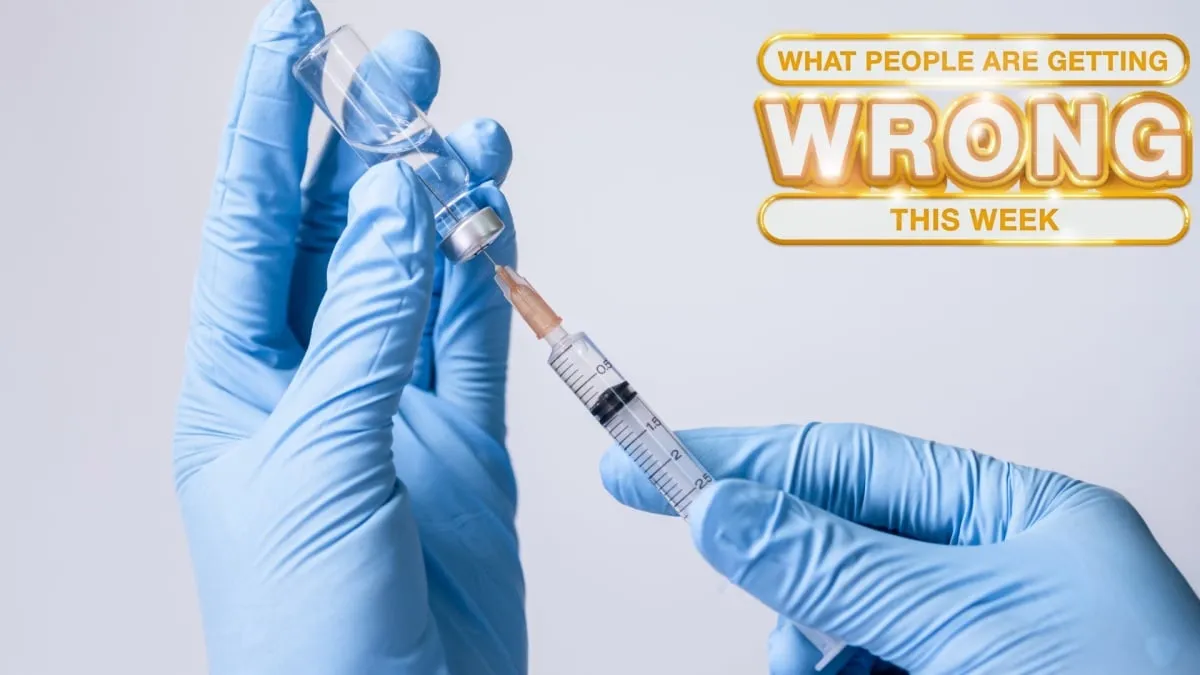
A recent outbreak of measles in West Texas has raised significant health concerns, resulting in 159 cases reported across the state. Among these, 22 victims required hospitalization, and tragically, one individual has died. In light of this deadly outbreak, some Texas parents are reportedly considering hosting measles parties as an alternative to vaccinating their children. This alarming trend highlights the critical issue of misinformation surrounding measles, which can have devastating consequences. In this article, we examine and debunk common myths about measles and the MMR vaccine.
Many people believe that measles vaccines pose significant risks. While it is true that a small percentage of individuals experience side effects from the measles, mumps, and rubella (MMR) vaccine, these effects are typically mild. Common reactions include fever (affecting 5% to 10% of vaccinated individuals) and mild rashes (occurring in 2% to 5% of cases). Serious side effects occur in about 1 in 4,000 cases. In contrast, the consequences of contracting measles are severe: nearly everyone who contracts the virus develops symptoms such as fever, red eyes, sore throat, and a blotchy rash. Alarmingly, about 1 in 300 individuals who get measles will die from the disease.
Another misconception is that the measles vaccine can cause outbreaks of the disease. This belief has gained traction due to misinformation propagated by organizations like Children's Health Defense, led by Robert F. Kennedy, Jr. In reality, the measles vaccine introduces a weakened form of the virus to stimulate an immune response. Although the virus may be detectable in vaccinated individuals for up to four weeks, transmission of the weakened virus is extremely unlikely. The recent Texas outbreak has been confirmed to be caused solely by wild measles, with no instances of vaccine shedding.
Despite being available since 1963 and demonstrating safety and effectiveness, many parents remain hesitant to vaccinate their children due to fears of a link between the measles vaccine and autism. A recent survey from the University of Pennsylvania revealed that 24% of Americans still believe in this unfounded connection. This myth originated from two flawed studies that have been thoroughly discredited. The scientific consensus is clear: measles vaccines are safe and effective, preventing the disease and saving lives. Achieving a high vaccination rate is essential to eliminate measles, as evidenced by the World Health Organization's declaration of its eradication in the U.S. back in 2000.
Some believe that vitamin A can treat or prevent measles. While studies have shown that vitamin A may help reduce complications in severe cases, its effectiveness is limited in the United States, where nutritional deficiencies are rare. In fact, vitamin A is not part of the official treatment protocol for measles in the U.S. Public health officials emphasize that vaccination is the only effective way to prevent measles. Importantly, a dose of the measles vaccine can still be administered within 72 hours of exposure to lessen the severity of the disease.
The belief that natural methods can prevent the spread of measles is misleading. The only way to effectively stop the transmission of measles is through vaccination. Measles is highly contagious; according to the CDC, if one person is infected, up to 90% of unprotected people nearby will become infected. While maintaining good health can improve outcomes if infected, the best prevention remains vaccination.
Hosting measles parties is a dangerous notion. Although surviving measles does provide natural immunity, the risks far outweigh any perceived benefits. Approximately three out of every 1,000 people who contract measles die, and many suffer life-altering complications. As Dr. Ron Cook, chief health officer for the Texas Tech University Health Sciences Center, stated, "We can’t predict who is going to do poorly with measles." Therefore, deliberately exposing children to the virus is not only foolish but potentially deadly.
While measles outbreaks do occur, the current situation in the U.S. is concerning. Until this year, there had not been a child death from measles since 2015. Since the disease was declared eliminated from both North and South America in 2000, outbreaks have typically been small and linked to travelers bringing the virus from abroad. However, decreasing vaccination rates are contributing to the spread of these outbreaks. In addition to Texas, cases have emerged in states like Kentucky, California, and New Jersey, raising alarms about the potential for a larger problem.
While the measles vaccine is highly effective, it is not infallible. It boasts a 97% effectiveness rate, meaning that a small percentage of vaccinated individuals may still contract the disease. Fortunately, those who do experience breakthrough cases generally have milder symptoms compared to unvaccinated individuals.
The recent uptick in measles cases is undoubtedly concerning, but it pales in comparison to the outbreak in the early 1990s, which saw 27,000 cases in the U.S. The root cause then, as now, was a lack of vaccination. The CDC’s historical data emphasizes that increasing vaccination rates is essential to combatting outbreaks effectively. Currently, a vaccination rate of 95% is necessary for herd immunity, yet many states have fallen below this threshold, with 14 states reporting vaccination rates under 90%.
In conclusion, combating the misinformation surrounding measles and the measles vaccine is essential for public health. Vaccination remains the most effective way to prevent the spread of this highly contagious disease, protecting both individual and community health.